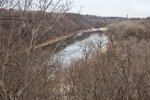By Margie O’loughlin
What is a watershed?
What is our local watershed called?
Where does it begin and end?
What is the largest watershed in the U.S.?
According to board chair of the League of Women Voters Upper Mississippi River Region, Mary Ellen Miller, “We all know our zip code and our area code. We should all know our watershed.”
Everybody lives in a watershed, and ours is called the Upper Mississippi River Region (UMRR). The League held an educational session where listeners could learn more about UMRR on Tuesday, March 26 via Zoom.
League of Women Voters at work
The League of Women Voters is a nonpartisan, grassroots organization working to protect and expand voting rights and ensure everyone is represented in American democracy. Additionally, they work in and around these other four key issues: the environment, health care reform, the census, and immigration.
Members of the League of Women Voters advocating for environmental issues this year are focused on reducing nutrient pollution in the UMRR. They are concerned about both surface and ground water in the Mississippi River, and the threats posed to the environment and to human health.
Miller said, “Some issues are best understood and dealt with on a regional level that transcends political boundaries. That’s especially true for water issues, because water contamination doesn’t stop at municipal or state lines. What goes into the Upper Mississippi River is determined by decisions, actions, and choices made by many people over a very large region.”
What is a watershed?
According to the U.S. Geologic Survey, a watershed is an area of land that drains all the streams and rainfall to a common outlet such as the outflow of a reservoir, mouth of a bay, or point along a stream channel.
The northern-most boundary of our watershed starts at the headwaters of the Mississippi River in Itasca State Park, Minn. It extends south to Cairo, Ill., where the Ohio River enters the Mississippi River channel. Along the way, it gains strength from major tributaries including the Missouri, Illinois, Minnesota, St. Croix, Chippewa, Black, Wisconsin, and Kaskaskia rivers, and creeks and streams too numerous to name.
UMRR is made up of five states: Minnesota, Wisconsin, Iowa, Missouri, and Illinois. It is the largest watershed in the US. Its network of streams, floodplains, lakes and uplands comprise the largest area of contiguous freshwater wildlife habitat in the central United States.
Why does it matter?
The Mississippi River Valley is a vital migration corridor for 40 percent of North America’s waterfowl and 60 percent of its bird species.
It provides habitat for more than 125 fish species and 30 species of freshwater mussels.
More than 30 million people live and work in the UMR basin and rely on it for food, transportation, power production, and drinking water.
We all live downstream
The cumulative effects of water pollution in the UMRR (and everywhere) are overwhelming. What can individuals do to improve the health of our watershed?
Whether urban, suburban or rural, our homes and yards are all connected through water. The effects of how we steward the places we live show up far beyond our property lines. Our small choices add up in the big scheme of things. As the gardening season approaches, consider doing one or more of the following:
1. Plant native plants to help keep soil in place. To get through Minnesota’s hot summers and (usually) cold winters, prairie grasses like big bluestem grow deep roots to reach nutrients and water below. These roots act like an anchor for garden soil. Native plants and grasses are more drought tolerant, benefit pollinators, are beautiful and low maintenance.
2. Aerate your lawn once a year to break up the soil so nutrients and water can more easily reach roots. Mulch your leaves or “leave the leaves” in place in the fall.
3. Install a rain barrel to collect roof runoff, and save the rainwater for later use. Conserving water and preventing runoff into the storm water system is a double-win. Reroute downspouts away from pavement and into grass, a rain barrel, or rain garden. Conserve water indoors too by fixing leaks, turning off faucets when lathering hands and brushing teeth, and generally being more aware of water consumption.
4. With climate change accelerating, when it rains now – it pours. If you have a lawn, you can help reduce runoff by keeping rain where it lands. Mow your lawn to 3’ inch high, or more. The taller the grass, the deeper the roots; the deeper the roots, the more water absorption there is into the soil. Leave lawn clippings in place to encourage richer, more absorbent soil.
5. Spend time in and along the Mississippi River and its tributaries. Learn to love what is too easy to take for granted.
Watershed resources
Want to learn more about UMRR or get involved with organizations working to protect water resources in the Twin Cities? Here are three of the approximately three dozen watershed organizations at work in the metro area:
• St. Paul’s Capitol Region Watershed District: www.capitolregionwd.org
• In Minneapolis, the Mississippi Watershed Management Organization: www.mwmo.org, and Minnehaha Creek Watershed District: www.minnehahacreek.org
Gretchen Sable is the League of Women Voters communications director. She said, “Water is the most important resource on our planet. The League of Women Voters works at all levels of government to build public awareness and understanding of water-related issues, so that citizens can engage in promoting positive solutions.”



Comments
No comments on this item Please log in to comment by clicking here